 | E-mail to Birds Korea |
 | KWBS |
in the Region
 | The Oriental Bird Club |
 | BirdLife International (Asia) |
September
Temperatures begin to cool, especially towards the end of the month, with maxima often falling from 28°C to 20°C. Sunny, dry weather predominates, though often punctuated by occasional heavy rain and very strong winds associated with typhoons.
September sees migration pick up considerably, with a build-up of ducks including the first returning flocks of Baikal Teal by mid-month. Seabirds still provide much interest (with small but increasing numbers of jaegers and dark shearwaters possible), while shorebirds like Nordmann’s Greenshank and a very few Spoon-billed Sandpiper can be found at prime sites, such as the Geum and Nakdong Estuaries, with other Yellow Sea “specials” also at Hwaseong (Namyang Bay) and Song Do (Incheon). Whiskered and White-winged Black Terns, although scarce in South Korea, become rather more widespread with small flocks of the latter at Seosan and in Gunsan, along with an increasing number of Mongolian Gull. Raptor migration includes large concentrations of Chinese Sparrowhawk making their way towards Japan (where over 50 000 have been recorded in one day on an island in the Korean Straits only 40 km south of Busan!), along with smaller flocks of Grey-faced and Crested Honey Buzzards, and very small numbers of Pied Harrier and Amur Falcon especially through the west and northwest. Passerines become rather more numerous and perse, with Thick-billed Warbler and Brown Shrike early in the month, good numbers of Eastern Yellow Wagtail , Pechora Pipit, and the three species of "grey-brown flycatchers" by mid-month (some Dark-sided and Brown still, with a peak in Grey-streaked). Towards the very end of September, Olive-backed and Buff-bellied Pipit migration starts in earnest, and the first small flocks of buntings also arrive, with most numerous being Chestnut and Black-faced.
September holds the chance of national rarities like Rose-coloured Starling, Ashy Drongo, Tree Pipit, and South Polar Skua. Firsts for Korea in recent years have included Steppe Grey Shrike in 2004, Eurasian Dotterel in 2005, Willow Warbler in 2006, and Wood Warbler and Buff-breasted Sandpiper in 2007.
(The following records are a compilation of our own sightings and records sent in by other observers. As well as being posted on the Birds Korea website(s), selected records are also forwarded to other Korean-language birding websites; records of threatened species are arranged and forwarded to Birdlife International and national authorities when appropriate; flag images and records are passed to bodies responsible for their coordination throughout the flyway; and all records sent to us are used to compile annual reports and to support the evolving understanding of the status of many of Korea’s birds.)
Seonjae, Daebu & Yongheung Islands, September 24
Although birding was secondary, it didn’t take much to notice several Chinese Egret, Whimbrels and a Eurasian Curlew at Sonjae-do: fortunately there also remains fairly extensive mudflat around Yongheung-do.
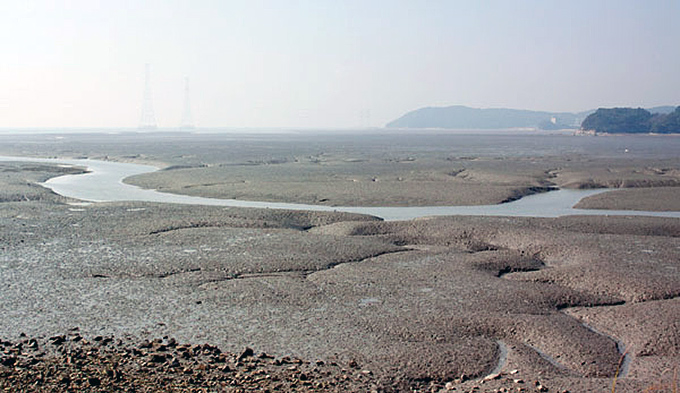
Reclamation is a lot more apparent around Daebu-do, although these areas form temporary wetland at least until they are later built on. At one such area today, a brief stroll quickly noted a Western Osprey, a loose circling trio of Northern Goshawk and a Hobby patrolling the grasslands: in reeds a Common Kingfisher, Yellow Bittern and pair of Mallard (breeding?).
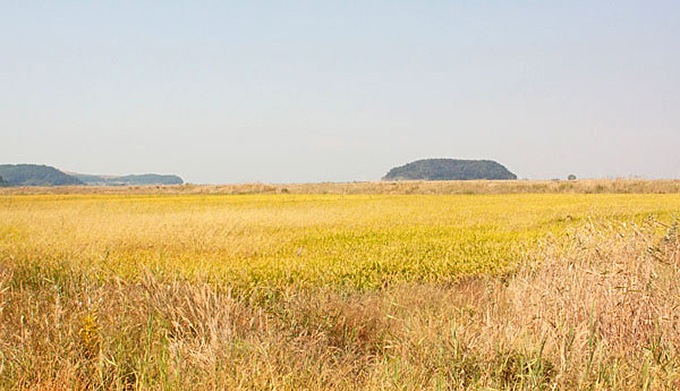
Large new wind turbines are now in place on Yongheung and Daebu islands. Solar panels are up on one or two houses.
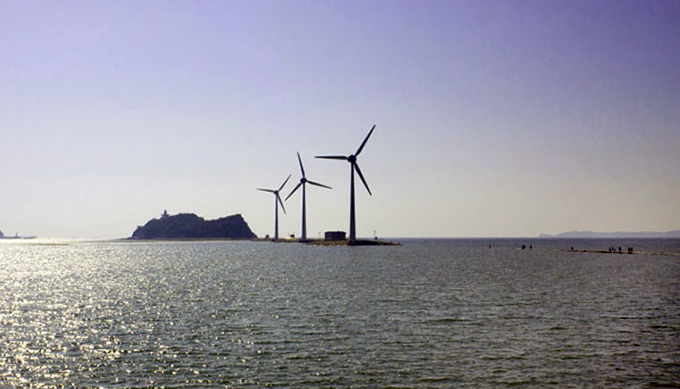
Igidae, Busan, September 19
Between 1530 and 1830, in N4-6 winds, a dozen or so Streaked Shearwater north, c. 6 large white-headed gulls south (including one Taimyr Gull) but only one Common Tern. Open areas and forest edge provided some hint of migration, with two Siberian Stonechat, one Asian Brown and two Grey-streaked Flycatchers noted, and one or more Arctic Warbler still in trees next to the Birds Korea office.
Yongjeong Island, September 17
Most encouraging of 34 species in an afternoon at Yongyu bay, a gathering of between 1300 -1500 Barn Swallows ranked along the telegraph wires, (with 900+ counted perched and a large number simultaneously in the skies all around). All were gutturalis and there were no martins in amongst, so it seems safe to assume they are Korean breeders. A cloud of them mobbed a confused Japanese Sparrowhawk. Their night roost, as ever, in thick reeds.
On the mudflat, 4 trawling Black-faced Spoonbills and up to 25 Chinese Egret, with their bouncing sidelong gait. On the saltpans and shrimp-pools, 3 Common Redshank and nearby 4 Spotted Redshank made for a nice contrast. Disappointingly a lot of the old trees on the bank have been removed to make way for a new road and warehouses. Actually much of the island is a scene of unending concrete development, and most of the actual shoreline is now a promenade of tents and camping grounds.
From the Yongjeong bridge, a distant flock of c.200+ Great Knot. Unfortunately the extensive mudflats here are undergoing new reclamation projects. Looking at the latest tourist map of the area, it appears that the tidal mudflats of the area have been gradually concreted to make way for a new environmental theme park, country club, “robot land”, environmental office, and golf club.
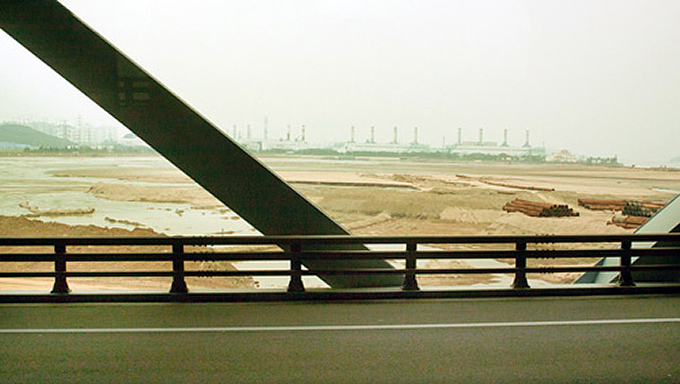
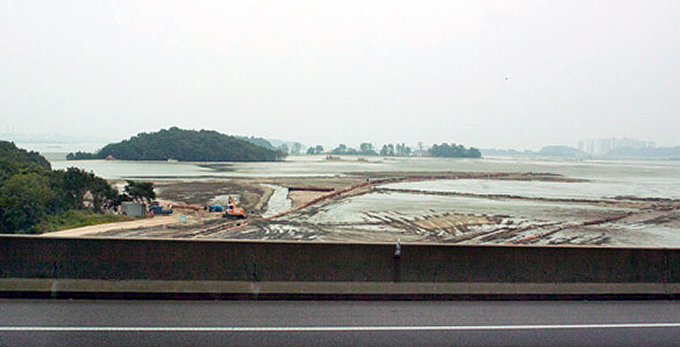
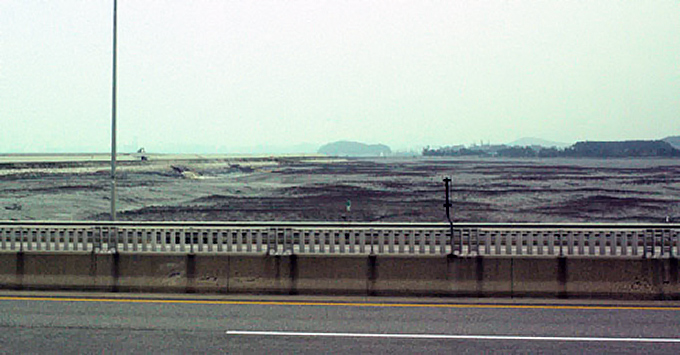
Deokjeok Island, September 11-13
Two days spent hiking the majority of the trails on the island, in mostly cool, cloudy weather conditions. Out of only 30 species seen, there was just a trickle of migration in evidence although one or two interesting species were noted. Foremost among these was a Long-toed Stint consorting with party of 6 Wood Sandpipers, in a small freshwater wetland at the edge of an area of rice paddies. Around the rice fields nearby, a Striated Heron, 2 Siberian Stonechats, a Richard’s Pipit, and a small group of Eastern Yellow Wagtails. Raptors were mainly represented by frequent Eurasian Hobbies, which were regularly seen in all parts of the island, while at one point an Osprey passed high overhead. Along the forest trails, the day lists were mostly filled with common resident species (including many Great Spotted Woodpeckers, an uncommon species in the south of the country where I live), although there were a few more unusual birds including single White’s Thrush, Eastern Crowned and Yellow-browed Warblers. In a more open, scrubby area, a Dollarbird was seen, and 2 Little Buntings rounded off the list of migrants.
Igidae, Busan, September 6
Two hours of seawatching in fair conditions (with S/SE3 winds and 20% cloud cover) found 425 Common Tern “blogging” (but no sign of 2 White-wingeds and one Whiskered seen the day before), small numbers of shorebirds heading south (including 3 Far Eastern Curlew, a distant flock of 15 Great Knot, 9 Whimbrel and 2 Pacific Golden Plover), but only 10 or so distant Streaked Shearwater moving north.
Igidae, Busan, September 3
With winds at N/NE 5-6, a very strong northward movement of Streaked Shearwater first noted at 10am. Counting was conducted between 1500 and 1800, and sample counts each hour recorded 1,000 north in 13, 17 and 23 minutes respectively – resulting in a rather conservative estimate of 20,000 Streaked Shearwater north during the afternoon. Also logged were a single Parasitic Jaeger and 4 or 5 Pomarine Skua, 30+ Red-necked Phalarope, 450 Common Tern, and one White-winged Tern.





